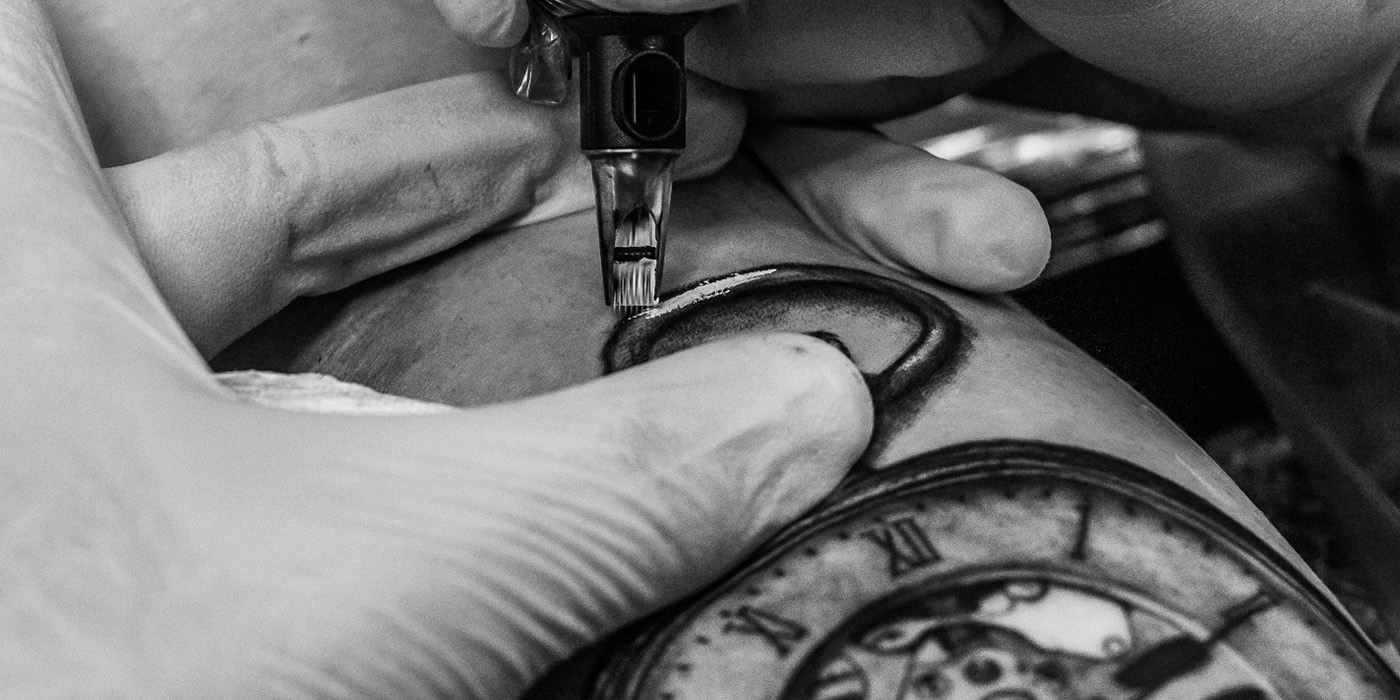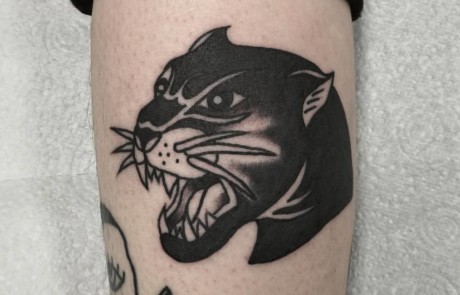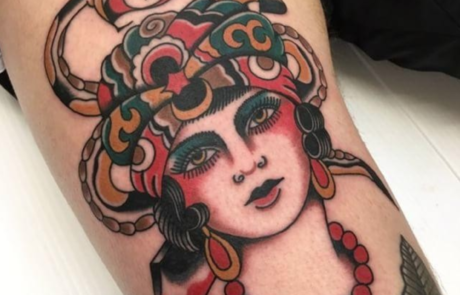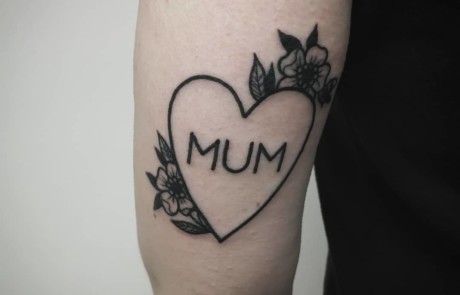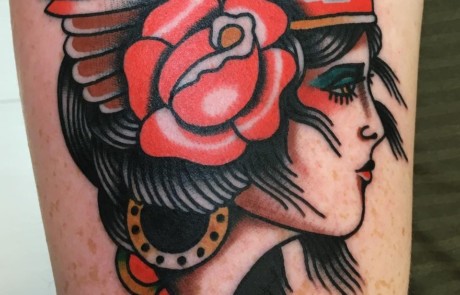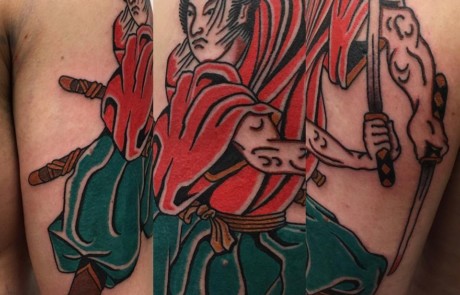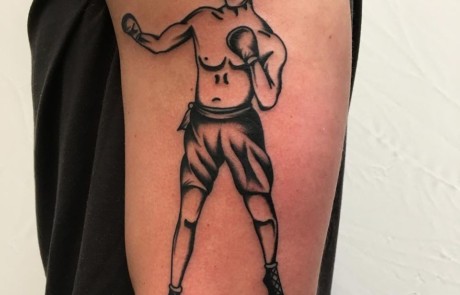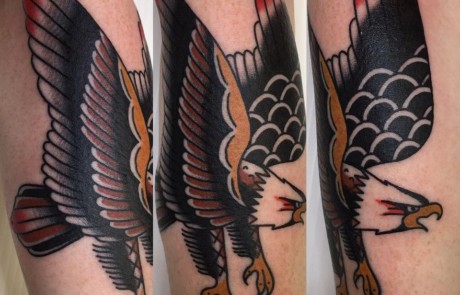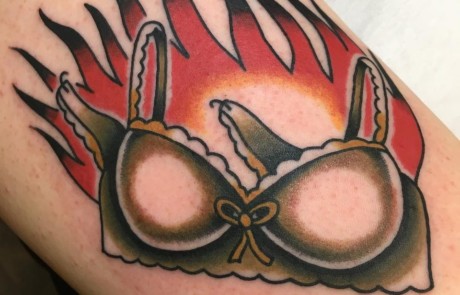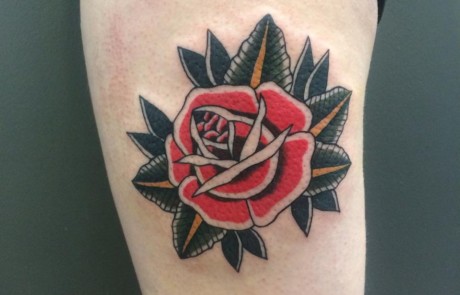Old School Tattoos
Traditional tattoos have soared in popularity once again in recent times, developing a strong and ever-expanding community of tattoo fans. While more modern trends like dotwork tattoos and more abstract approaches to tattooing grow in stature, with people drawn to the complexity and subtlety of these designs, the clearly defined lines and bold, colourful style of traditional tattooing (also known as old school tattooing) maintains legions of committed fans across the globe.
It’s impossible to even wade into a discussion on traditional tattooing without devoting a section to Norman “Sailor Jerry” Collins. With a name that rings out even far behind tattoo enthusiasts, Sailor Jerry can be considered the father of traditional tattooing. Having first come into contact with tattooing when jumping freight trains, Jerry’s love for, and skill in tattooing deepened enormously after he joined the US Navy as a teenager and voyaged through the Polynesian islands. After completing his service in the late 1920s, he set up a lively and renowned studio on the island of Oahu in Hawaii, which significantly was the main location of the Pacific fleet, where a constant stream of sailors passed through on their 48 hours leave – essentially, he honed his ink skills by practicing on a never ending supply of drunk and willing sailors.
This was no ramshackle operation however. Jerry is considered essential to the importance of sterilisation in the tattoo studio. Through Jerry’s pioneering insistence on medical practice-like cleanliness, as well as developing his own pigments and adapting his needle machine to be less abrasive on the skin, he arguably set the standard worldwide, establishing Jerry’s instantly recognisable visual style which was complimented by a remarkably high-quality finish as the benchmark for others to reach. Through Jerry’s foundational influence, we can track all the hallmarks of the traditional tattooing style: often a mix of the beautiful and the profane, strong black outlines, a range of cartoon-like shapes and an elaborate iconography, as well as a deep vein of wit running through it all.
While there’s a wide variety of designs in traditional tattooing, some pop up more than others and are worth focusing on.
Swallows are among the most common designs. These have featured massively in traditional tattoo imagery over the years, originally signifying that a sailor had travelled 5000 nautical miles. Nowadays swallow tattoos can be interpreted with the concept of travel. Swallows travel gigantic distances before returning to their home. Swallow tattoos carry this implication of return – perfect for free spirits travelling the world mindful of their eventual enriching return home.
Anchors are just as, if not more, iconic than the swallow. These represent stability, and often originally included “Mom” or a loved one’s name, providing a vehicle for finding strength during testing moments.
Snakes and panthers are also popular. These animals are renowned for their stealth and ferocity in equal measures and are often shown coiled or mid-spring, ready for action in order to present a sense of danger and readiness for those taking on the modern world.
The past few decades have seen women adapting and widening the world of tattooing. In the context of traditional tattoos, we’ve seen roses become hugely popular. Roses signify and generate romantic curiosity; the folds of rose leaves are also perfect for the crisp lines hardwired into the style of traditional tattooing. In the same way, cherries – representing freshness and also lust – have become very desirable tattoos to add to a collection of traditional ink work.
Traditional tattoos and the visual world Sailor Jerry created holds an enormously robust and persistent appeal in tattooing. The celebrated style established by what is perhaps tattooing’s most esteemed figure remains consistently among the most sought after types of tattoos, being constantly re-deployed, referenced and adapted as tattooing continues its ascent in art and popular culture. Perhaps more than anything, what’s so enticing about traditional tattoos for the 21st century enthusiast is the chance to engage in what is surely the most iconic modern visual style to have emerged in the history of the culture.


